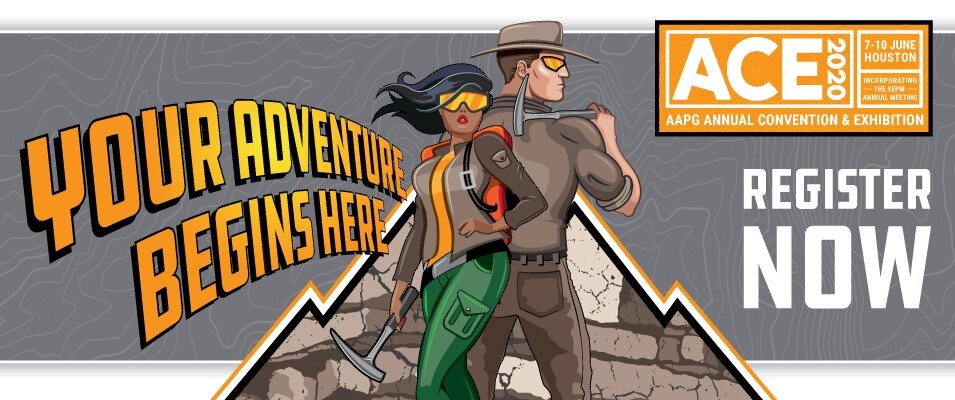Are these the heroes we need?
/First rule of criticism: balance it with something positive.
Technical societies — AAPG, SEG, SPE, EAGE, and the many others — do important work in our discipline. They publish some quality content, they organize a lot of meetings, and they help attract talent to work in subsurface science and engineering.
The door is wide open for them to play a central role in the change that’s coming to our lives as subsurface professionals.
Second rule of criticism: stick to the facts.
In spite of their central role in many scientists’ professional lives, and the magnitude of the changes that are underway, technical societies have struggled to maintain relevance and therefore members. It’s hard to know the extent of the problem, as AAPG doesn’t report how many members it has (it’s been “approximately 30,000” for years) and SEG stopped reporting numbers in 2017. Make of that what you will.
Anecdotally, many of my friends have let their memberships lapse. I have too.
Third rule of criticism: avoid negative language.
AAPG came up with a couple of cool superheroes. They commissioned some artwork: two fit, handsome geologists, ready for anything. Their names? Trap Mitchell and Alluvia Hunt.
The laudable appearance of a woman — a non-white woman! — in this context rightly prompted praise:
This graphic showed up in my inbox yesterday and I started beaming.
— 🇧🇧 NyshRocks (@NyshRocks) January 15, 2020
This is the first time since starting my first geology degree 23 years ago that I’ve ever seen a default image of a geologist depicted as a woman.
Yeah!@moscardellil did you have something to do with this? pic.twitter.com/3APyKx8J5O
How appalling is it that a geoscientist had to wait 23 years to see a female geoscientist take centre stage like this? I’m embarrassed by that. Kudos to AAPG for that decision.
Kudos which we have to partially revoke, unfortunately. Because the decision, if it was a decision, to change Alluvia’s skin colour in different situations is… well, it doesn’t look good. At best, it’s weird.
Fourth rule of criticism: be honest.
When I saw this dynamic duo, I rolled my eyes. Of course I did: I’m predisposed to criticize the technical societies and I’m a well-known marketing whiner. And as a scientist in Software Underground pointed out, it’s not targeted at me; she also found it uplifting. (Obvious in hindsight, but the whole point of my various privileges is that everything seems to be about me — it’s good to be reminded of our blindspots.)
But I’m trying to be positive here. I rolled my eyes because I think AAPG and the other societies can have a far-reaching and positive impact on our community, and on society. There is hard work to be done finding enough energy and raw materials for people to prosper.
The door is wide open
If AAPG wants to be part of the future, they have to figure out what ‘relevant’ means. Being relevant does not mean:
Promoting oil & gas exploration with dysmorphic Barbie & Ken super-hero cartoon characters.
Paywalled everything, especially journals and conference papers.
Awards named after men and given to mostly men. And don’t get me started on ‘Distinguished’ people.
Doing all the other things you’ve always done which have led you to feel ‘not relevant’ today.
I would urge AAPG and all technical societies to consider becoming more relevant in some new ways:
Understand that oil & gas, while certainly important to society today, needs to end. The sooner the better.
Realize that subsurface professionals can contribute to society, and industry, in hundreds of other ways.
See that this change is going to require a massive educational effort, both for us, and for society.
Believe that we need to massively broaden our community if we are to have the impact we can have.
Remove barriers to knowledge by committing to open access content and open data.
Remove barriers to participation by welcoming and representing everyone with equity and compassion.
The days of the hero explorer — tanned and lean, chiselled and serious, whacking stuff with hammers — are gone. Really, they never existed, or at least they were accompanied by a masculine monoculture and a total neglect for the environment.
The future can be different. Ms Hunt and Trap can be part of it. I believe we all can. But it’s going to require hard work, uncomfortable decisions, and abrupt, profound change. The door is wide open for AAPG, SEG, EAGE, and the other technical societies, if they would only notice.
What do you think? Are Trap & Alluvia just a bit of fun that might attract a new generation? Or do our technical societies need a lot more than cartoon heros and heroines? Let us know in the comments.










 Except where noted, this content is licensed
Except where noted, this content is licensed